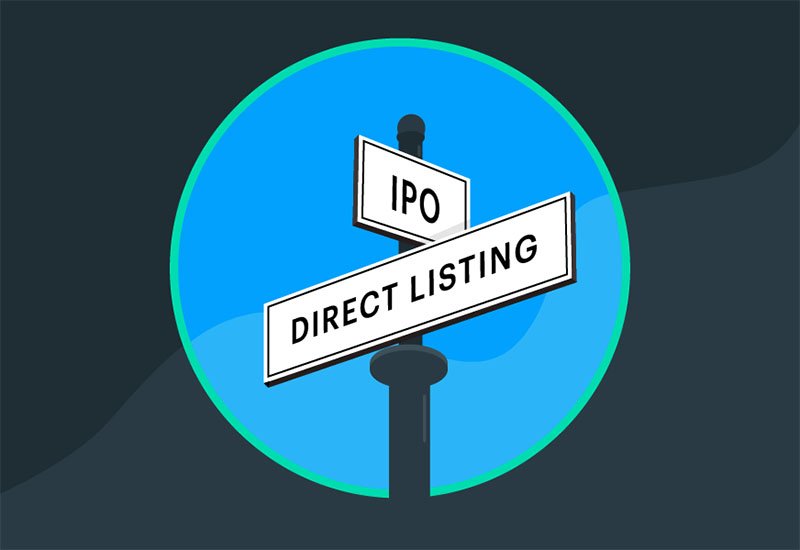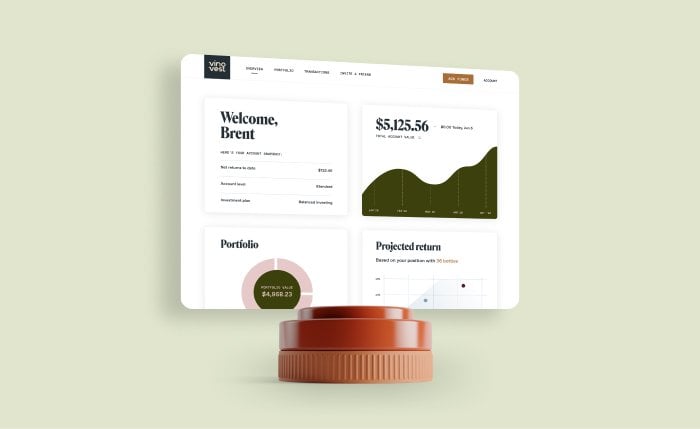11 Rewarding Investment Trends To Look Out For In 2025
Choosing the right investment assets can be a little tricky for new investors.
Seasoned investors would tell you to plan long-term by taking advantage of short and medium-term market volatility.
But how do you do it?
Let’s discover 11 exciting investment trends to look out for in 2023. Also, explore how fine wine makes a perfect investment and how you can invest in wine effortlessly through Vinovest.
Further reading
- Discover the world of Alternative Investments and why you should invest in them.
- Also, become a master at Investing In Fine Wine with this detailed guide.
11 Investment Trends to Check Out In 2023
Here are 11 investment trends that you need to watch out for.
1. Inflation Hedges

With inflation being at its highest since 1981 in the United States, the purchasing power of your fixed income might have taken a huge hit.
This unexpected rise in inflation has also led investors to move towards inflation-resisting investments like gold, fine wine, and TIPS.
Traditionally, gold has been a popular inflation hedge for investors, primarily because its value tends to rise with inflation.
However, gold’s performance in the past few years has been spotty. That’s why investors are turning towards more reliable investments like wine that have consistently outperformed inflation.
In 2021, fine wine witnessed an average growth of 23%, while the annual inflation rate in the US was around 5%.
Additionally, the market volatility of wine is relatively low. This is because the wine industry primarily depends on internal factors like climate and winemaking, not global events like the stock market.
In fact, the fine wine market has outperformed most global equities. In the past 15 years, the fine wine market has yielded 13.6% annualized returns compared to 8.58% annualized returns delivered by S&P 500.
How do you invest in fine wine?
You can buy, store, and sell bottles yourself or through brokers, bid in-person or online at wine auctions, or invest in wine stocks or bonds like Truett-Hurts and Diageo.
However, the easiest way to invest in wine is through a trustworthy wine investment company like Vinovest, which handles every step of building a fine wine portfolio.
Vinovest’s Master Sommeliers use quantitative investment models to curate a portfolio of investment-grade wines for you. It will even store your wine for you in its temperature-controlled bonded warehouses situated across the globe.
So whether you’re in the United States, the United Kingdom, Asia Pacific, or the Middle East - Vinovest will find the perfect storage for you.
All you need to do is, sign up on the website, fund your account using a credit card, debit card, or even crypto, and start building a rewarding wine portfolio.
2. ESG Integration

ESG integration is an investment strategy to include ESG factors (environmental, social, and governance) in your investment portfolio.
The global demand for sustainable investing hit a record high in 2021, reaching $2.7 trillion.
Investors are adopting this sustainable investment opportunity because companies governed by ESG factors tend to be less volatile and have higher 3-year returns. In other words, ESG investing protects you from the ups and downs of global markets.
To take a step towards sustainable investment and start your ESG investment journey, go for ETFs like iShares MSCI USA ESG Select ETF, which tracks the growth of top US companies.
Make sure you get sound professional financial advice before opting for ESG investment.
3. Investing In Artificial Intelligence

Artificial Intelligence replicates human intelligence in a computer or machine with faster speed and greater accuracy. Today, AI has become an essential part of almost every industry.
In fact, analysts at the International Data Corporation (IDC) have predicted that by 2024 the global AI market will reach $500 billion. That’s 17.5% annual growth.
To take advantage of this investment opportunity, invest in companies like Intuitive Surgical (ISRG), Upstart Holdings (UPST), Intel (INTC), Trimble (TRMB), and Brooks Automation (BRKS).
4. Metaverse Investment

Investment analysts claim that the metaverse could be the next big investment opportunity.
The metaverse is a virtual world where people can interact with each other without the confines of physical space. Facebook has already rebranded itself as “Meta” and plans to invest billions to build its metaverse.
The growing computing power, faster internet connectivity, and an increasing number of tech companies have led to rapid growth in these virtual ecosystems where you can shop, learn, and even exercise digitally.
In fact, this investment trend has already gained quite a momentum. Last year, Sothebys began operating its metaverse, a new virtual gallery in Decentraland, a 3D virtual world. Nike also announced the expansion of its digital footprint through the acquisition of RTFKT, a virtual sneaker company.
Microsoft (MSFT) is also planning the acquisition of Activision Blizzard for $68.7 billion in the most significant gaming deal in history — and a big bet on the expansion of the metaverse.
5. Alternative Investments

Alternative investing involves adding assets other than traditional investments like stocks, bonds, or cash to your investment portfolio.
Since October 2021, the stock market began seeing heavier volatility. In December of the same year, the Chicago Board Options Exchange’s CBOE Volatility Index (VIX) rose by 35%.
The need for less volatile investment options has turned investors’ attention to alternative investments like fine wine, fine art, and cryptocurrency.
Alternative investment classes are not only less volatile than traditional investments like the stock market, but they are also an excellent inflation hedge.
Take fine wine investment, for example. When Dow Jones fell by 10.19% in 2022, the fine wine market yielded a 3.38% return in the first quarter of 2023.
Another great example is the music industry. Technology has changed the way listeners consume music - virtual concerts and music streaming apps being the most common examples. The music market is expected to reach $131 billion by 2030.
You can start investing in music through royalties. Royalties are created by the licensing of copyrighted songs and recordings. It is a payment made to an asset owner for the right to use that asset.
You can buy and sell music royalties through online fintech companies like SongVest.
Other rewarding alternative investment options include real estate, cryptocurrency, and commodities.
6. Passive Investments

Passive investing is a form of investment trend that involves no discretion on the part of a fund manager.
In passive investing, the fund managers usually track an index or group of stocks like the Dow Jones Industrial Average. This contrasts with active investing, where the fund manager actively selects the stocks.
Even though the number of the actively-managed mutual fund exceeds the number of passive funds, it is expected to change over the next few years.
7. Meme Stocks

A meme stock refers to the shares of a company that have gained a cult-like following online through social media platforms like Twitter, Facebook, and Reddit.
Meme stocks investing is most popular among retail investors looking to gain high profits by investing in rapidly growing companies.
Morgan Stanley found that retail investor activity made up 10% of the trading volume on the Russell 3000 index. Reuters also reported that Europe’s retail investor base doubled in 2021.
Some of these meme stocks popular among retail investors are Gamestop, Tesla, Blackberry, and Bed, Bath & Beyond.
However, investing in meme stocks requires extensive research, studying consumer trend, and ensuring that the company has a dedicated investor relations department. So, before you make an investment decision, consult a professional for financial advice.
8. SPACs

SPAC or Special Purpose Acquisition Company is a publicly-traded company that raises capital by acquiring another private company.
After the acquisition, the private company merges with the SPAC and can be traded publicly.
The number of SPACs has increased significantly. In the first half of 2021, around 400 new SPACs were created. And in the first seven months of the year, SPACs raised over $100 billion.
A great example of SPAC is the DraftKings sports company. It merged with the Diamond Eagle Acquisition Corp to go public at $3.3 billion. Today, the stock trades at around $11 billion.
Looking at the popularity of the SPAC market, Defiance ETFs has created an ETF to track SPACs.
9. Direct Listings

When a private company offers outstanding shares to the public without selling it to an underwriter, it is called a direct listing. Direct listings aren’t usually made to sell new shares but provide higher liquidity to current investors.
In a traditional IPO, an underwriter (typically a Wall Street investment bank) purchases the shares. It then offers them to select institutions that distribute them to the general investing at a much higher price.
However, since no middlemen are involved in direct listings, the shares are much more affordable. Also, direct listings don’t require the company to create new shares - it only offers the public outstanding shares. This doesn’t dilute the value of original shares.
10. Cryptocurrency

In November 2021, the cryptocurrency market capitalization was $2.79 trillion, taking over major global markets, real estate, and TIPS.
The cryptocurrency market has seen an expanded investor base in recent years. In 2021, there was greater involvement of the institutional investor group despite its high volatility.
However, the crypto market can be pretty risky, especially because it’s still widely unregulated. If you are not an institutional investor or lack extensive crypto knowledge, it’s best to consult a financial advisor before making an investment decision.
11. Robo Advisors

A Robo-advisor is a wealth management software that automatically manages an investor’s portfolio and savings, an AI replacement to your portfolio manager.
Robo-advisors offer young investors and non-wealthy clients access to cheaper alternatives to a traditional financial advisor.
Additionally, this strategy allows personalization in investing through direct indexing. Direct indexing allows investors to directly purchase and sell securities, keeping the investment process transparent.
In 2020 the total assets under Robo-advisors management were over $500 billion in the U.S., which is expected to pass $830 billion by 2024.
This is less than 1% of the $58 trillion wealth management market, leaving a lot of room for growth.
Also, Bloomberg Intelligence predicts that over the next 10 years, millennials will control about 5x more wealth than they have today. Half of them already say they want to use digitally-focused wealth management services.
Take Vinovest, for example. It is an AI-based wine investment platform that analyzes an investor’s investment preferences and risk appetite and runs a detailed technical analysis to suggest the best investment-worthy wines.
You can create a personalized wine portfolio of rare and authentic wines while sitting at home - be it in San Francisco, Latin America, the United Kingdom, or even the Middle East.
Build The Perfect Investment Strategy With Fine Wine!

Technology-driven platforms and emerging markets open up plenty of rewarding investment opportunities to new and seasoned investors.
As inflation reduces the purchasing power of your fixed income and interest rates on your traditional investments go down, alternative assets like fine wine can prove to be highly beneficial.

Sign up on the Vinovest website and start building a portfolio of fine wines from anywhere in the world - be it North America, Latin America, or the Asia Pacific countries.



